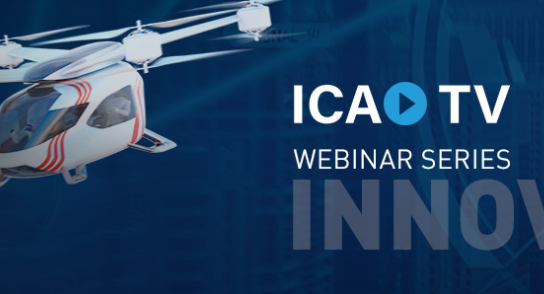By Jenny Beechener
Uncertainty and unpredictability around time-lines are the key issues for drone operators when it comes to developing new regulations, Bobby Healy, CEO and Founder of Manna Drone Delivery said at the ICAO Innovation webinar hosted by Wing on 17 February 2021. “This is important for a commercial entity because in the private sector space, we’re not going to be making money soon. However, we are hiring and spending on research and innovation. To do that we need investment and that doesn’t come with uncertainty.”
Recognising this dilemma, Swiss regulator FOCA collaborated with Switzerland’s air navigation service provider and industry to introduce an initial U-space framework. “Last week we launched ‘Networked Remote ID’ first phase, a soft launch only available to a limited group of users. The aim is to test infrastructure and learn before ready to deploy at national scale,” explained Francine Zimmerman, FOCA Manager Innovation and Digitalisation Unit. FOCA has also formalised cooperation with the US Federal Aviation Administration (FAA) through a Declaration of Intent to exchange information in areas including certification.
Next week marks an important European milestone when the Commission is due to approve the first UTM regulation. “We need regulation now to ensure we have a harmonised format and common approach. This will really help enable safe operations at scale,” said Francine Zimmerman.
The FAA has its own challenges. “For 40 years, our certification, air traffic and operations people have lived in their own swim lanes,” said Steve Bradford FAA Chief Scientist. “Information exchange needs to be global. We need to make sure we don’t go down separate paths. If everyone comes up with their own information definitions and own way of exchanging information, we could stifle ourselves and the industry.” The FAA’s BEYOND programme addresses beyond visual line of sight (BVLOS) and integration with manned aircraft. “Performance includes operations and information. Today’s interfaces are very distributed but not well defined and this limits airspace management. We can learn a lot from Unmanned Traffic Management (UTM) that should flow into ATC. We have lots of individual pockets of excellence but not very good flight information sharing in real-time across borders.”
Harmonising standards and procedures is important for airspace users where safety remains the underlying factor according to IATA Acting Director ATM Infrastructure Ruby Sayyed. “We need to have a structure and we need to be flexible. Having conversations with different stakeholders is very important. The airspace of the future is going to have diverse types of aircraft, diverse capabilities of pilots – onboard and on the ground.” This means looking future as well as existing technology. “This is not a one-off solution that will last 20 years. It will continue to change and we need to find solutions accordingly.”
A good example is the recently released ASTM standard for Remote ID. “It has been tested and successfully demonstrated many times in a distributed environment. However, it does not preclude the use of a centralised architecture which means a service provider can access data in the same manner in a distributed or a centralised model – thanks to the presence of an Application Programming Interface (API),” explained Francine Zimmerman. In the context of ATM’s monopolistic structure, standards need to accommodate all users if they are to lead to integration. “This is one of reasons why it is so hard for drone operations to scale – because access to airspace is so expensive. UTM is one of big cornerstones, and flight rules the next one, in how we can maximise efficiency and lower costs for airspace access for new entrants.”
For more information
https://www.icao.int/Meetings/webinar-series/Pages/ScheduleAndRegistration.aspx




